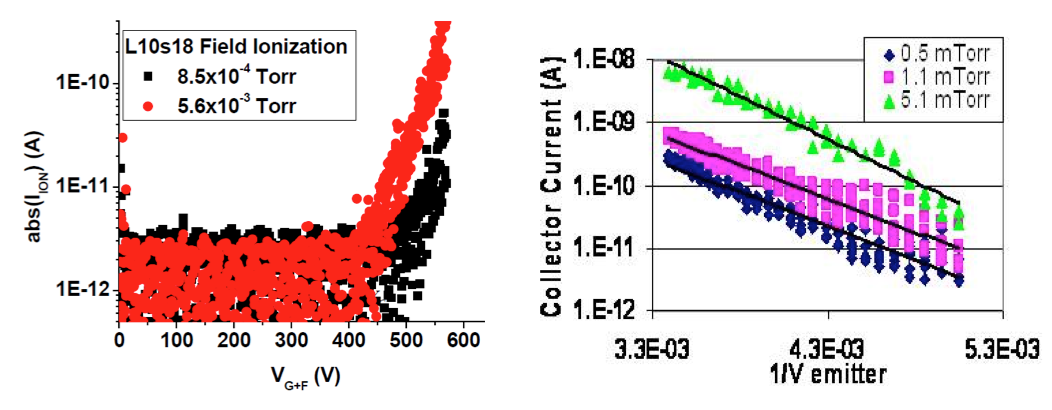We are interested in developing low-power multiplexed field ionizers for portable mass spectrometry because of three key reasons:
- Electron impact ionizers generate a collection of fragments from the original molecule that is analyzed. The spectrum generated by an electron impact ionizer is a “signature” that can be used to identify the analyte. For example, the National Institute for Standards and Technology (NIST) has elaborated a library of electron impact ionization spectra that is quite useful for this purpose. However, the spectra of two compounds could be quite similar, leaving room for misidentification of the analyte. This is particularly true for large and complex molecules. Field ionization is an orthogonal (i.e., independent) method to collect spectrafrom the analyte that is composed of fewer and larger fragments. The use of both field ionization data and electron impact ionization to analyze the sample increases the information power of the mass spectrometry system and therefore, it visibly reduces the possibility of analyte misidentification.
- In a field ionization ionizer the field enhancer is at a positive voltage with respect to the gate. Therefore, the positive ions that are created through field ionization do not back stream to the field enhancers, which results in higher pressure operation capability and higher device reliability without the need of complex ion optics.
- Field ionization currents are orders of magnitude smaller than electron impact ionization ion currents. Therefore, multiplexing the ionizer sensibly improves the signal-to-noise ratio of the portable mass spectrometer.

We have used both electron impact ionizer architectures in reverse bias to produce field ionization (Fig. 3). In general, the structures that are used for field emission can be used for field ionization if the bias voltage is reversed. However, given the hierarchy of the fields required to produce field emission and field ionization, it is possible to create field ionization-level electrostatic fields at the field enhancer and field emission-level fields at the gate, which would invalidate the device architecture. Therefore, the gates of field ionizers should be very smooth to avoid the presence of field concentrators.
